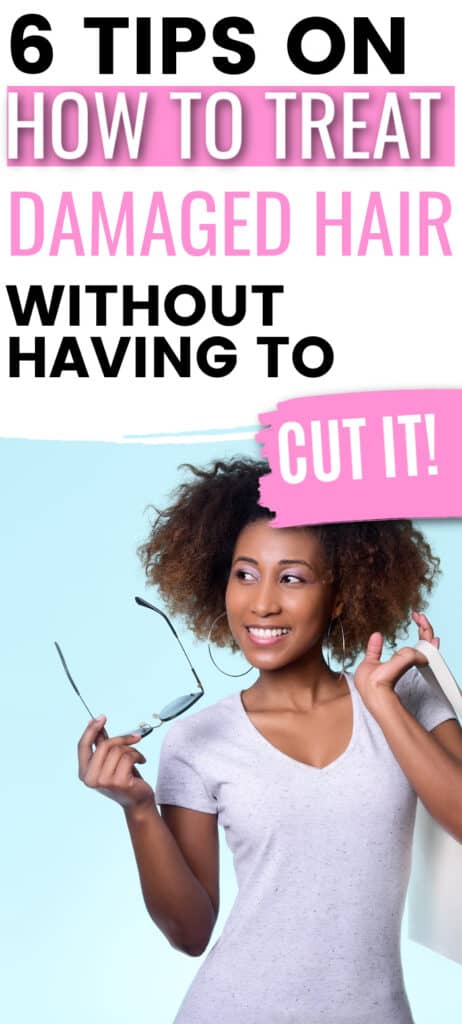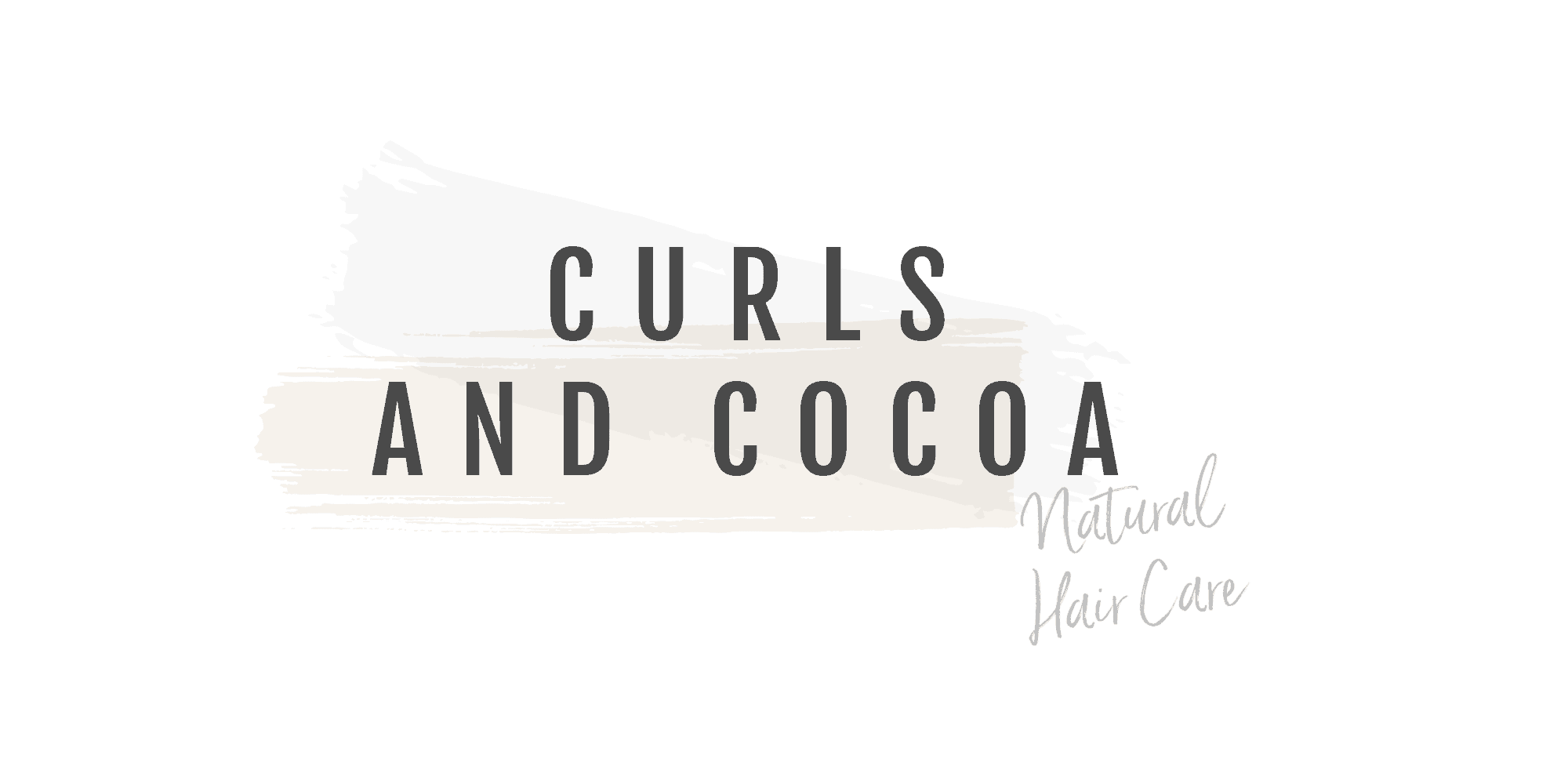We all love our curly locks but from time to time we may enjoy being able to straighten our hair and switch it up a little bit.
We’ve all been there.
We wake up and decide that we want to try something a little different. Sometimes it goes well and sometimes we end up with heat damage if we haven’t taken the right precautions.
Today we are going to discuss how to treat heat damaged hair without having to necessarily cut our hair and start all over again.
***Please note that this site uses affiliate links if you would like to read the legal stuff you can find it here

How To Identify Heat Damaged Hair
There are a few simple ways that you can easily identify heat damaged hair without having to put your hair under a microscope.
Firstly after having washed your hair you may see that some of your curls have not reverted and remain straight.
This is one of the most obvious signs of heat damage that you will see.
You may also notice:
- Your hair feels a lot dryer than usual
- A loss of shine in your hair
- You may have difficulties styling your hair
- A loss of elasticity
- You may experience breakage
- Detangling will seem a lot more difficult
How To Treat Heat Damaged Hair
Once you have been able to identify that your hair does in fact have heat damage there are a few things that you can do to try to restore and repair your hair.
1. Extra Protein Treatments
Protein is the most wonderful thing when it comes to heat damage. Not only will doing a protein treatment help to strengthen your hair but it will also repair some of the damage.
Protein works by filling in the gaps along the cuticle of your hair that have been damaged.
If you were to put your hair under a microscope it would be easy to see that the strands of your hair have been damaged. You would immediately notice that there are sections along the strand that are missing.
Protein will help you to fill in those gaps, making your hair stronger.
You can make your own protein mask at home using eggs, avocado or banana. If that seems like too much work for you then you could try a store-bought protein treatment like this one.
Just be sure to follow the manufacturer’s instructions so that you don’t end up with protein overload.
Related post: Does high porosity hair need protein?
2. Deep Condition
Deciding to deep condition your hair is another great move because you may have noticed that your hair is feeling a little dry. This is because the heat has stripped your hair of its natural oils and left it feeling bear.
Adding a deep conditioner to your routine will help to restore some of that lost moisture and help to give your curls back the bounce that they once had.
3. Seal In Moisture
After having applied all those treatments to your hair you need to make sure that you are able to seal in all that lovely moisture.
As your hair has been damaged by heat you will need to keep a close eye on it. That means treating your hair very special by keeping the moisture levels up.
At this point, one of the worst things you can do is to allow your hair to become dry.
There are a few things that you can do to seal the moisture into your hair. One of the most common ways is by using the LOC method.
The LOC method is pretty simple to use. It stands for Liquid, Oil, Cream.
You can read more about the LOC method here.
Related post: How to seal moisture into curly hair
4. Wear A Satin Bonnet
Wearing a satin bonnet is going to be a very simple thing that you can do to help your hair to retain moisture.
Rather than sleeping on a cotton pillowcase and allowing your hair to have friction and moisture loss, using a simple satin bonnet like this one can really make all the difference.
If a satin bonnet is not for you then try a satin pillowcase which is just as good, Just remember to stay on the pillow whilst you sleep!
5. Avoid The Use Of Heat
This should really go without saying but try to avoid the use of heat for a time just to allow your hair time to recover.
Even if you are going to apply heat to your hair safely, I would still refrain from using it for as long as possible.
Although you intend to do so safely this time around there is still an element of needing your hair to be in good condition before applying heat to it.
If you can, stay away from heat for as long as possible or at least until your hair feels much better.
6. Low Maintenance Hairstyles
Doing low maintenance hairstyles will also help you during this time. Now is not the time to be doing lots of high maintenance hairstyles that will essentially add stress to your hair.
My advice to you is to keep it as simple as possible for as long as possible.
Related post: 12 natural hair mistakes
7. If It Needs A Trim It Needs A Trim
This is the last thing we want to be talking about there but in all honesty, there is only so much repairing that you can do when it comes to heat damaged hair.
It may be that your hair to too far gone.
If this is the case I would strongly advise you to trim your hair gradually over a period of time until the heat damage is gone.
This is probably not what you want to hear but sometimes that is the only solution.
Related post: 5 Signs your hair needs a trim
How To Avoid Heat Damage In The Future
If you do plan on using heat again in the future then it’s a good idea to make sure that you do so safely.
Here are a few things that you should be doing before you allow heat anywhere near your hair.
- Make sure you use a heat protectant like this one.
- Ensure the heat is not too high
- Give enough time between heat sessions for your hair to recover
Final Thoughts On How To Treat Heat Damaged Hair
Although being able to switch hairstyles gives us lots of variety and the ability to feel differently about the way we look. It’s important to do so safely.
Apply heat in the wrong way, even just once can land us in a lot of trouble for a long time.
If you want to make sure that your hair remains in good standing then you must be very careful. However, if you do realise that you do have some degree of heat damage already then the above tips will help you with how you can treat heat damaged hair.
Related posts:
How to straighten hair without heat
LOC vs LCO method, which is best for your hair
How to straighten hair safely (the right way)





